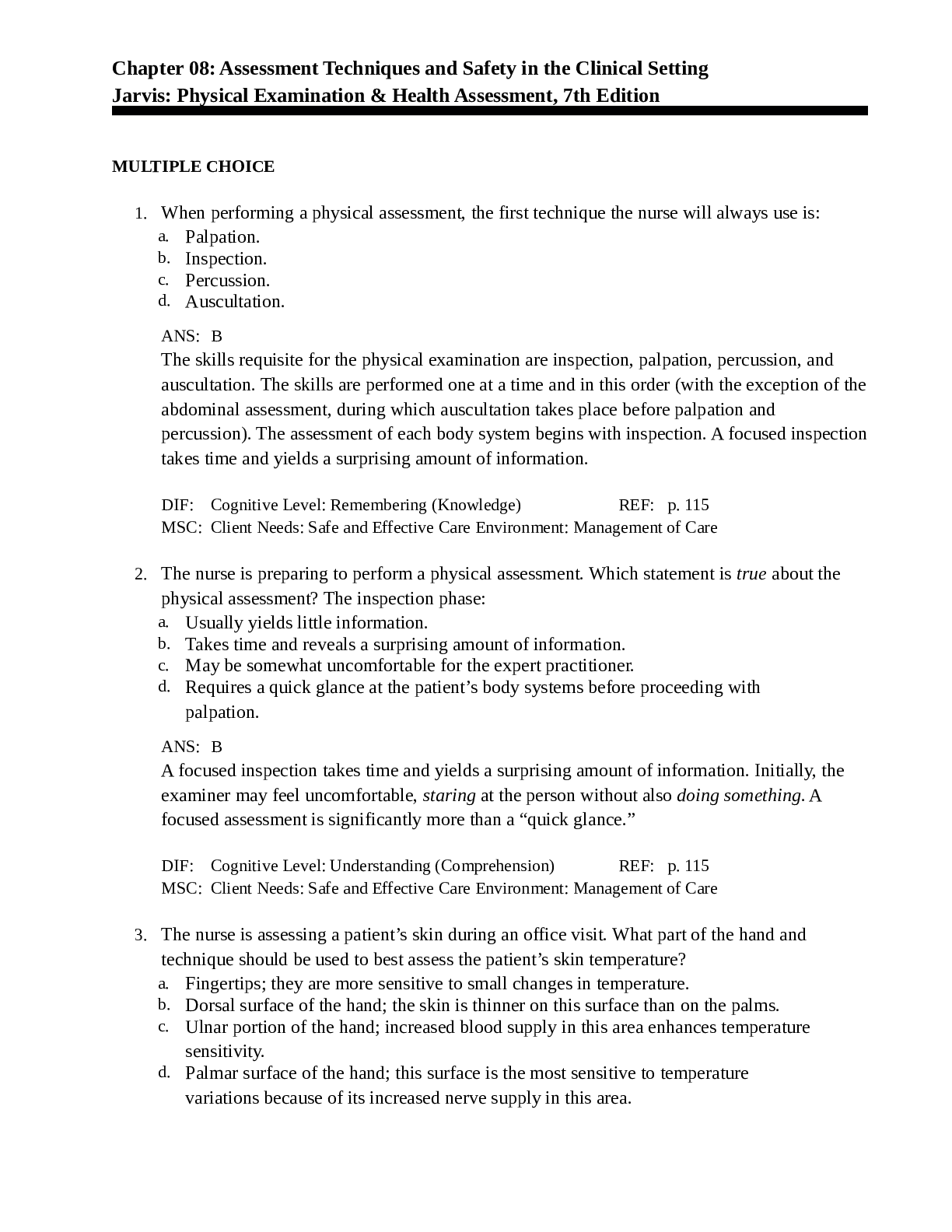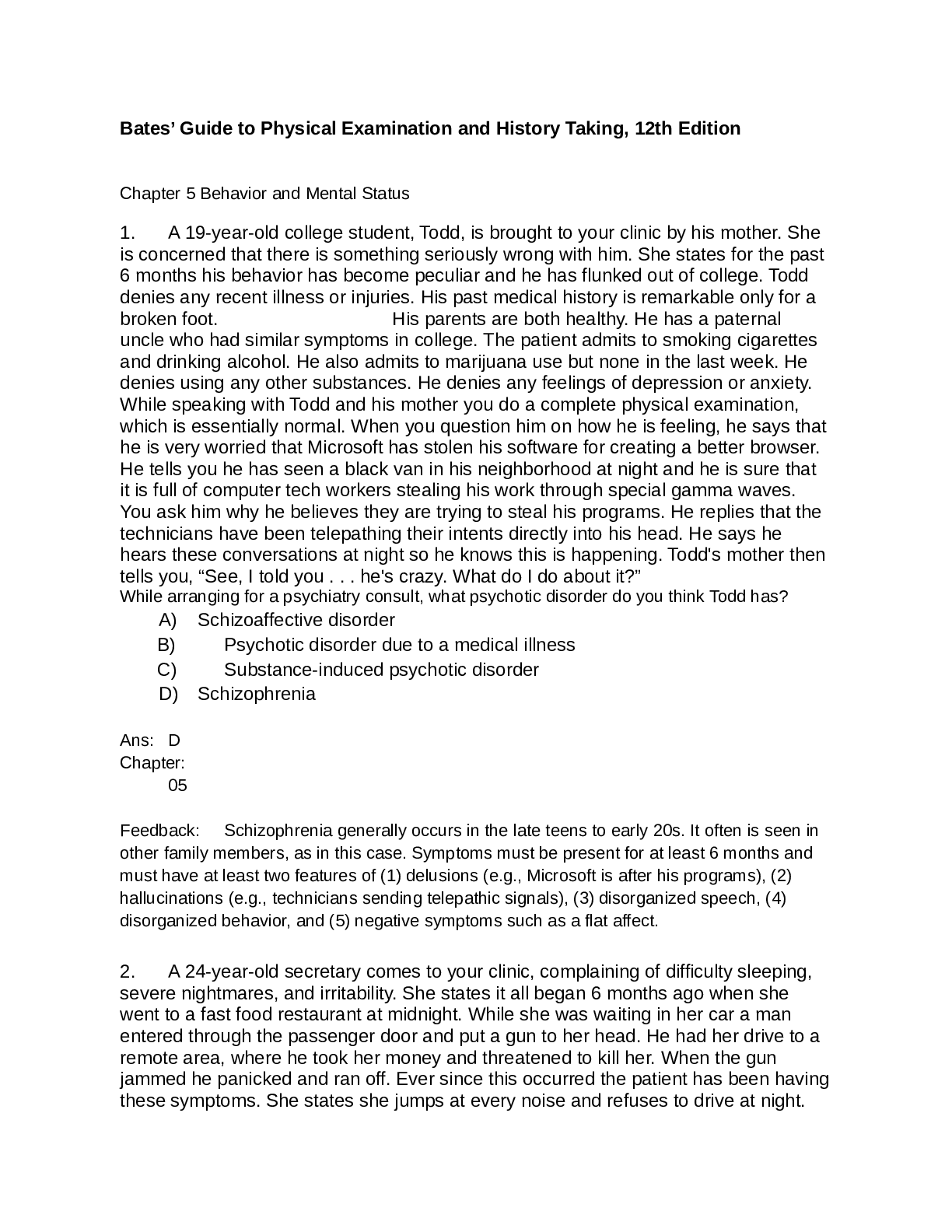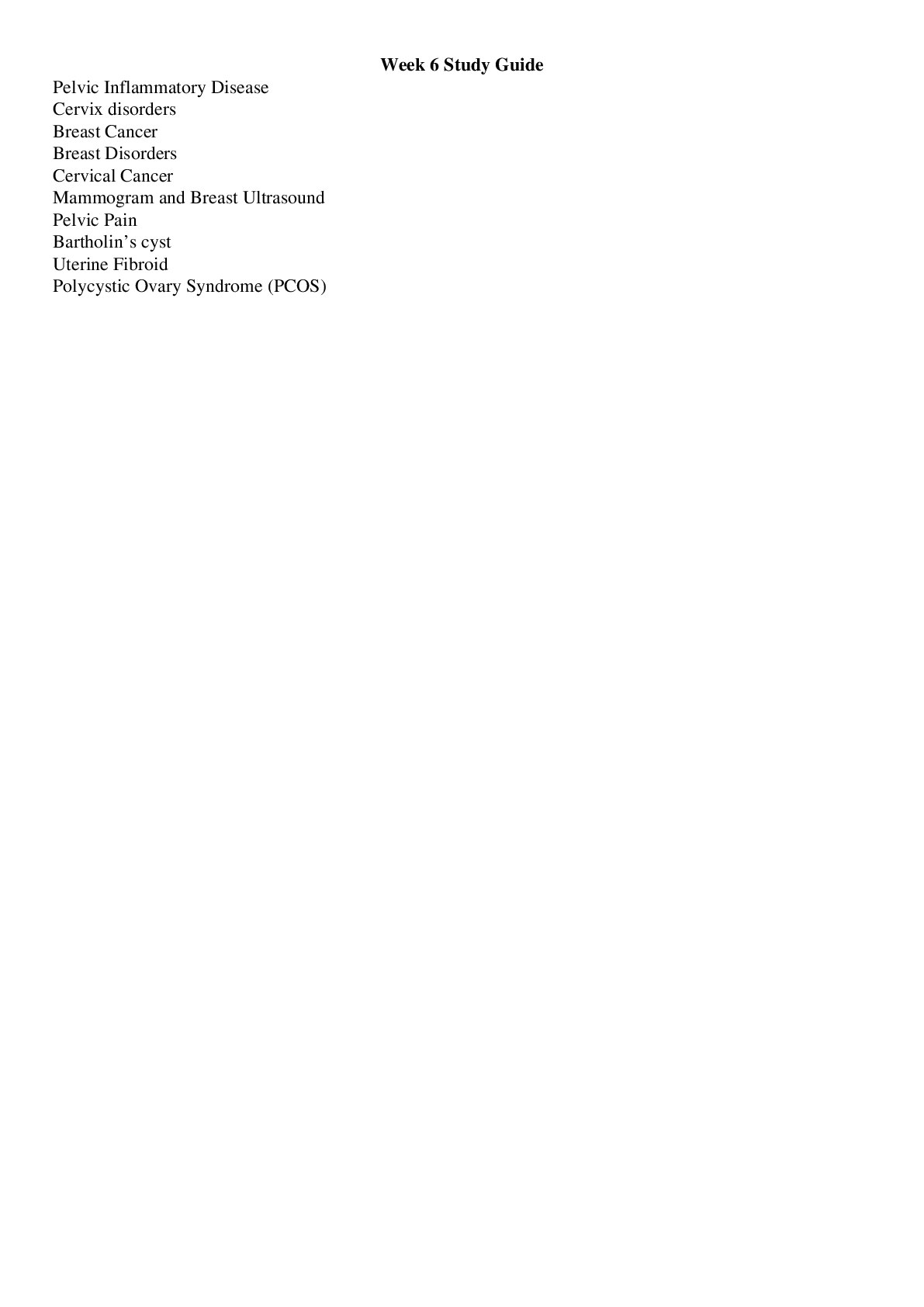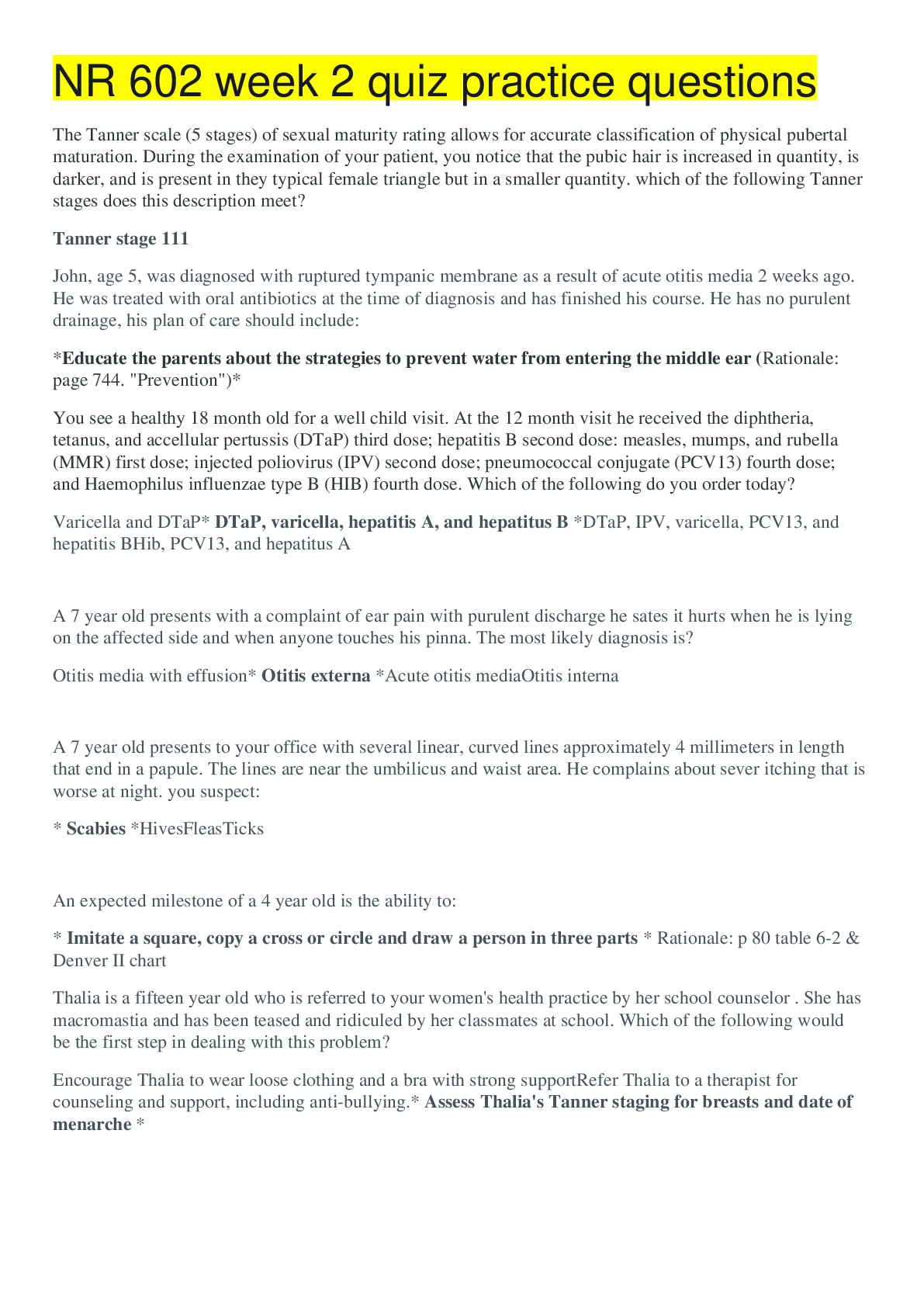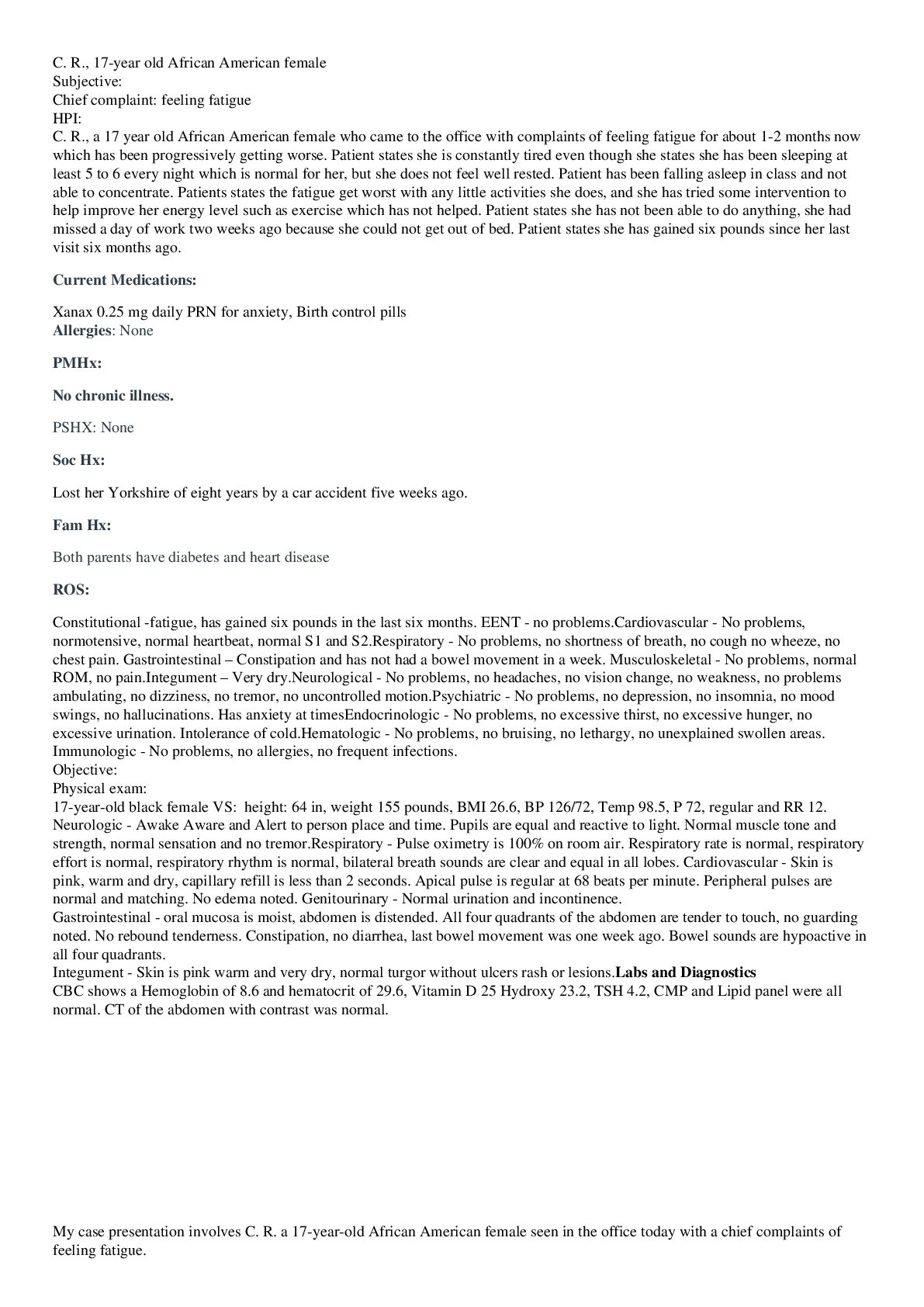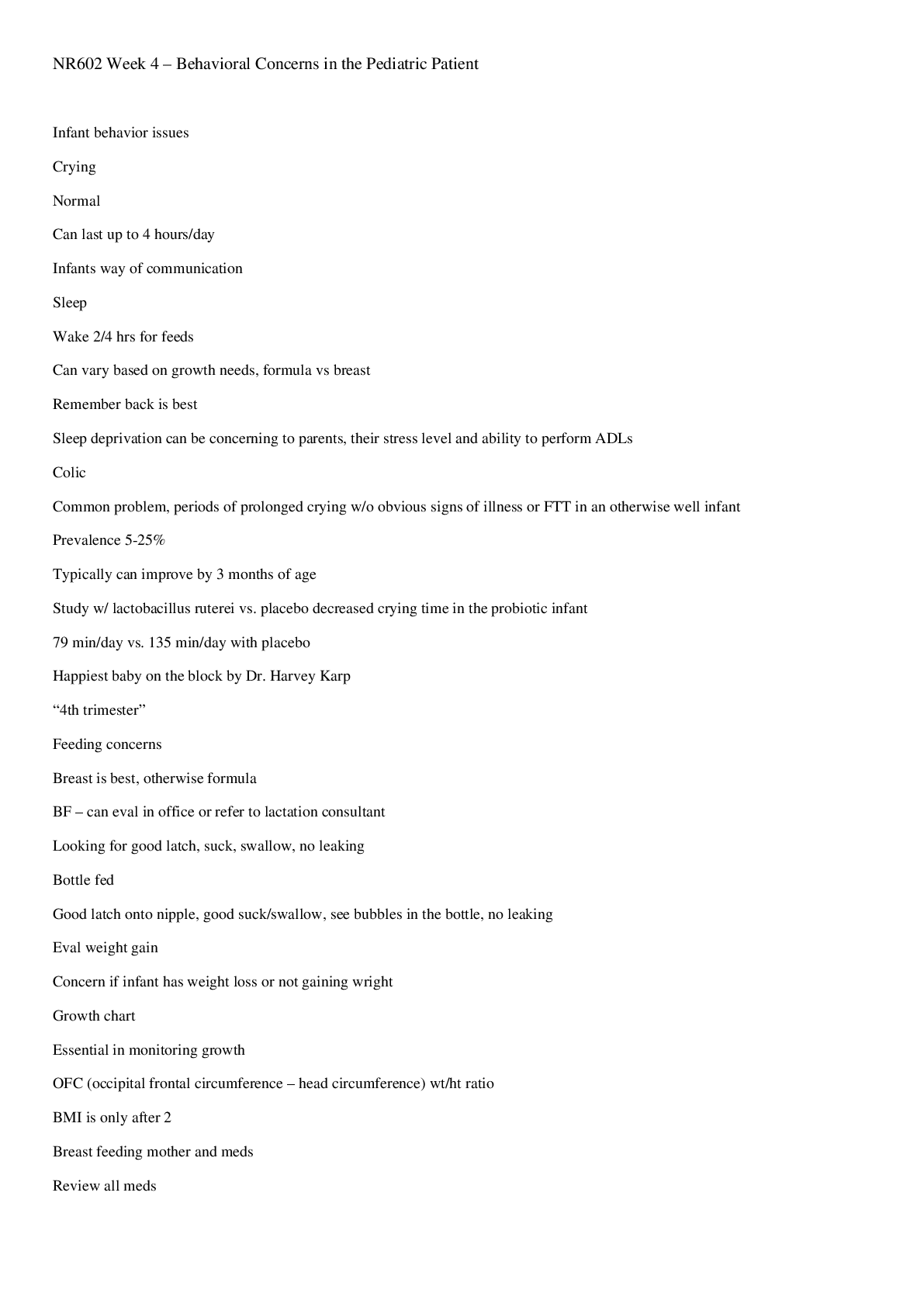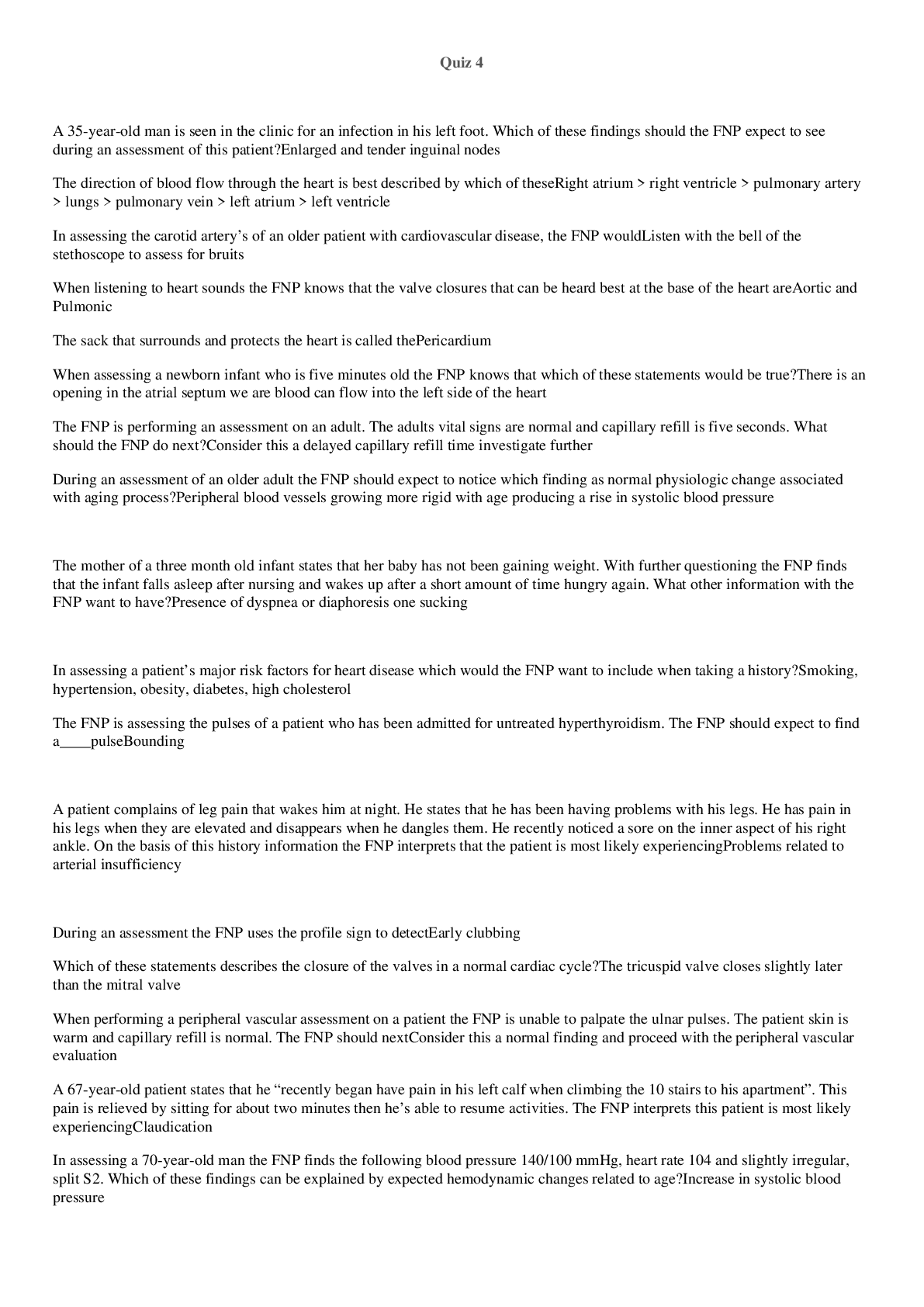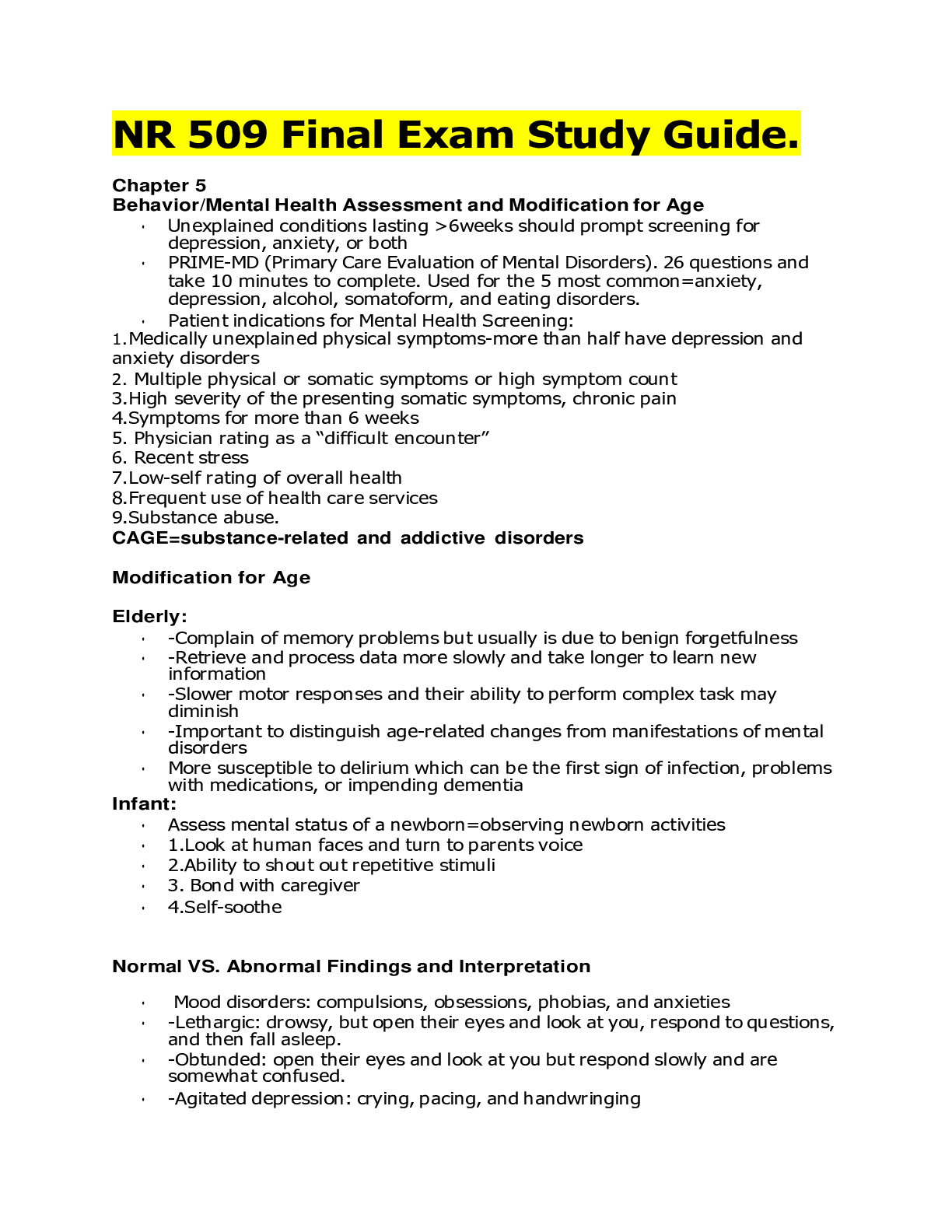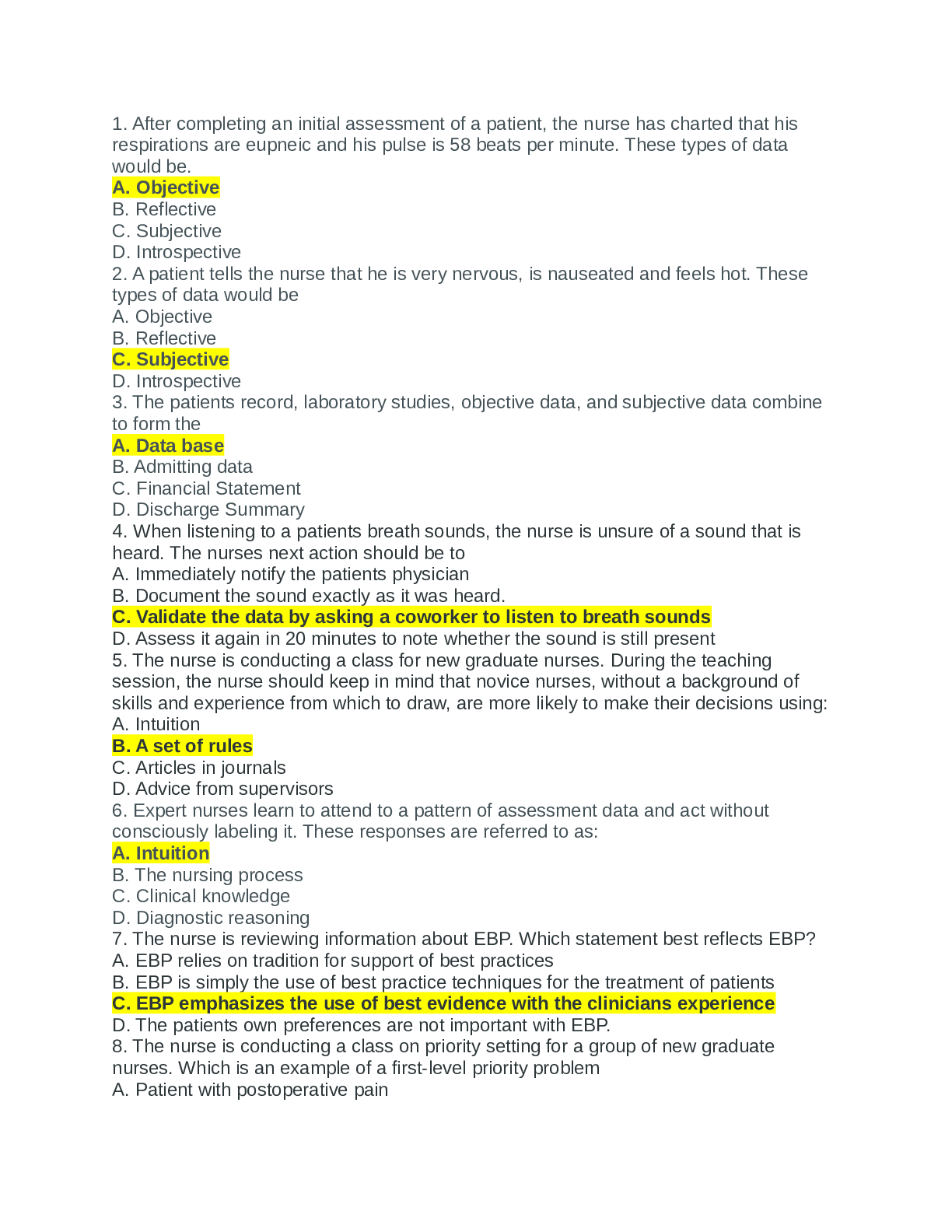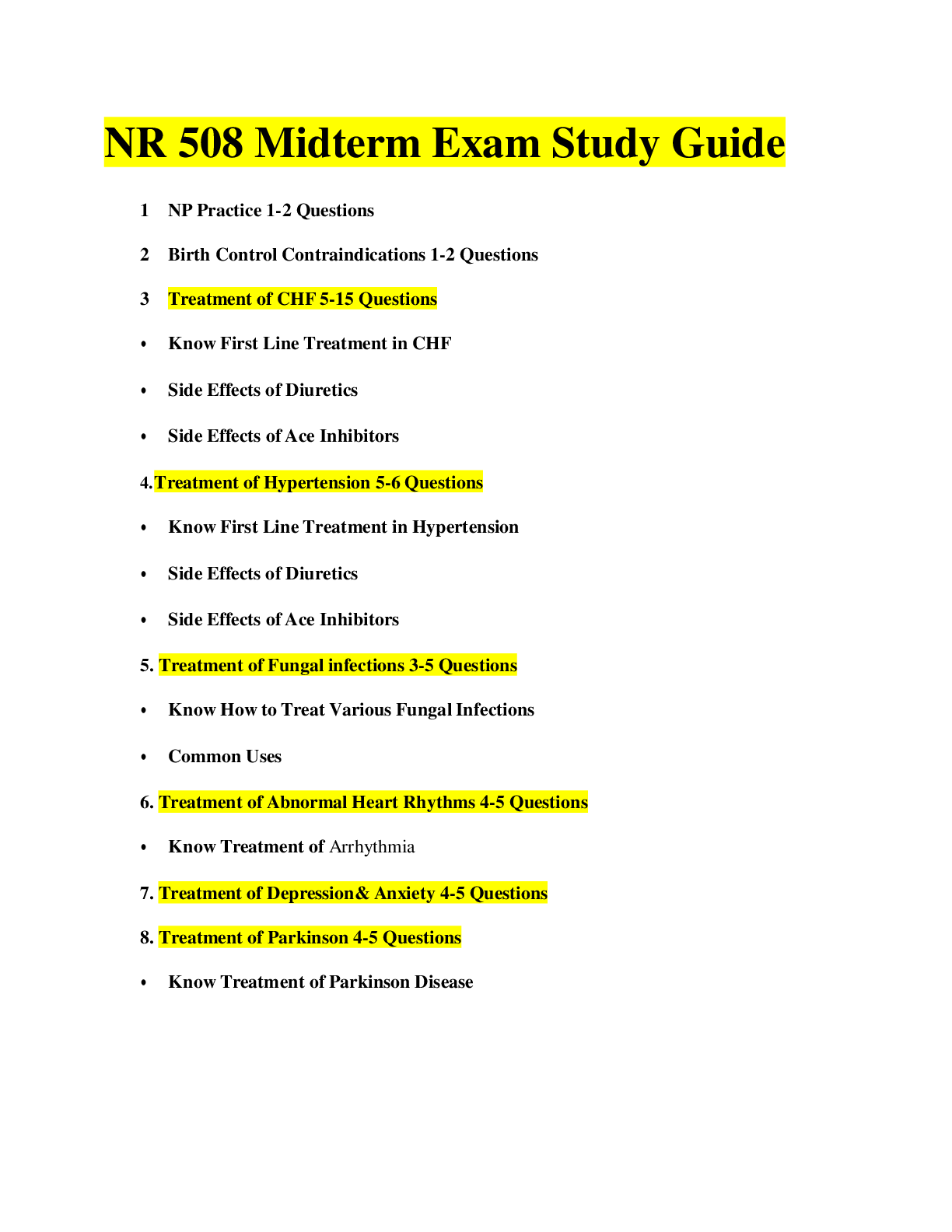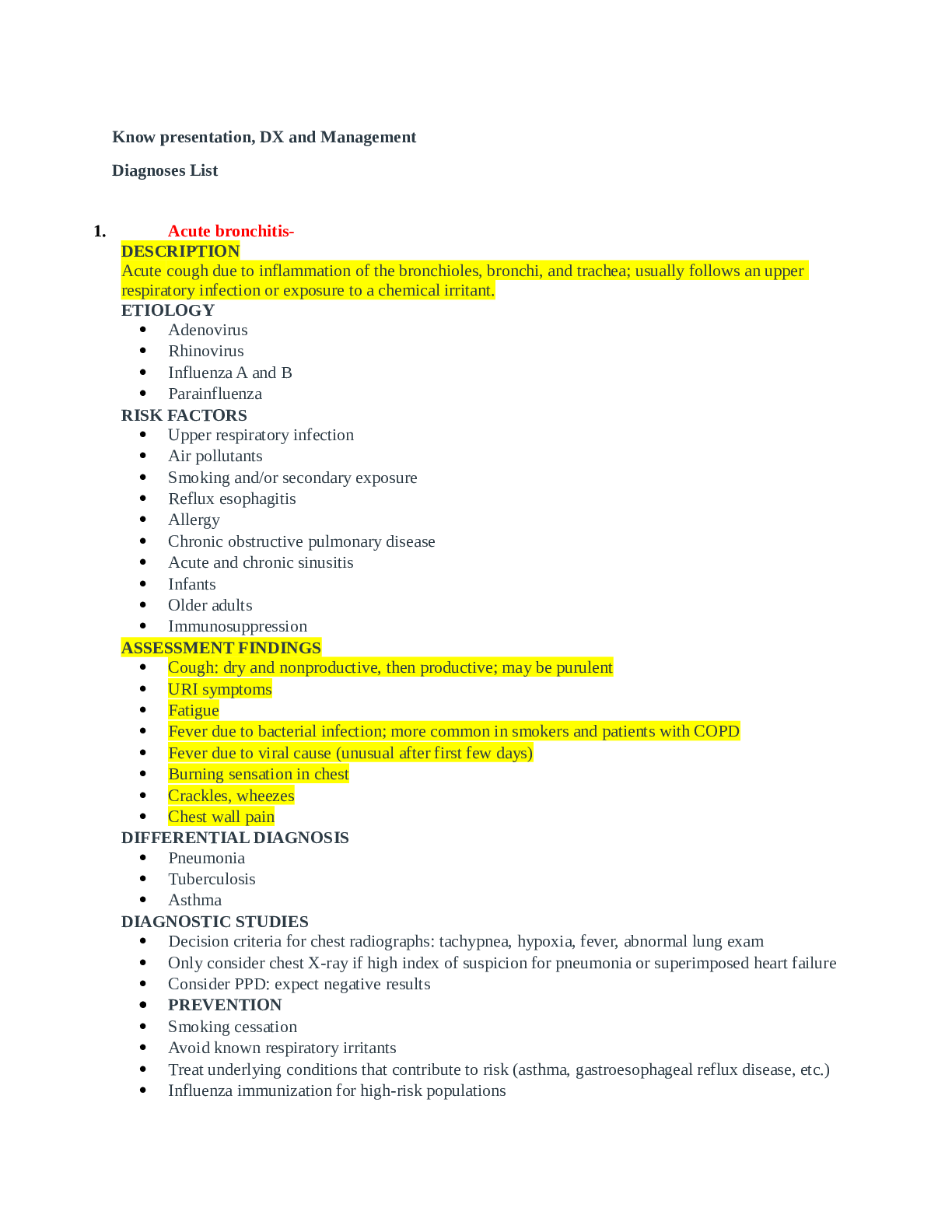*NURSING > STUDY GUIDE > Chamberlain College of Nursing NR 503 (All)
Chamberlain College of Nursing NR 503
Document Content and Description Below
NR503 FINAL EXAM STUDY GUIDE Review primary, secondary, & tertiary prevention practices, screening, vulnerable populations, and the role of the nurse practitioner. Week 5 (Ch. 2) 1. Discriminate po... pulations at risk for development of chronic health conditions while associating the role of the Advanced Practice Nurse in levels of promotion. Common risk factors: unhealthy diet, physical inactivity, and tobacco use Childhood risk: There is now extensive evidence from many countries that conditions before birth and in early childhood influence health in adult life. For example, low birth weight is now known to be associated with increased rates of high blood pressure, heart disease, stroke and diabetes. Risk accumulation: Ageing is an important marker of the accumulation of modifiable risks for chronic disease: the impact of risk factors increases over the life course. Underlying determinants: The underlying determinants of chronic diseases are a reflection of the major forces driving social, economic and cultural change – globalization, urbanization, population ageing, and the general policy environment. Poverty: Chronic diseases and poverty are interconnected in a vicious circle. At the same time, poverty and worsening of already existing poverty are caused by chronic diseases. The poor are more vulnerable for several reasons, including greater exposure to risks and decreased access to health services. Psychosocial stress also plays a role. Preventative health actions are often categorized in three levels: Primary prevention - aims to prevent disease or injury before it ever occurs. This is done by preventing exposures to hazards that cause disease or injury, altering unhealthy or unsafe behaviors that can lead to disease or injury, and increasing resistance to disease or injury should exposure occur. Nurses play the part of educators that offer information and counseling to communities and populations that encourage positive health behaviors Examples include: legislation and enforcement to ban or control the use of hazardous products (e.g. asbestos) or to mandate safe and healthy practices (e.g. use of seatbelts and bike helmets) education about healthy and safe habits (e.g. eating well, exercising regularly, not smoking) immunization against infectious diseases. Secondary prevention - aims to reduce the impact of a disease or injury that has already occurred This is done by detecting and treating disease or injury as soon as possible to halt or slow its progress, encouraging personal strategies to prevent reinjury or recurrence, and implementing programs to return people to their original health and function to prevent long-term problems. Nurses work with these patients to reduce and manage controllable risks, modifying the individuals’ lifestyle choices and using early detection methods to catch diseases in their beginning stages when treatment may be more effective. Examples include: regular exams and screening tests to detect disease in its earliest stages (e.g. mammograms to detect breast cancer) daily, low-dose aspirins and/or diet and exercise programs to prevent further heart attacks or strokes suitably modified work so injured or ill workers can return safely to their jobs. Tertiary prevention - aims to soften the impact of an ongoing illness or injury that has lasting effects This is done by helping people manage long-term, often-complex health problems and injuries (e.g. chronic diseases, permanent impairments) in order to improve as much as possible their ability to function, their quality of life and their life expectancy. Nurses are tasked with helping individuals execute a care plan and make any additional behavior modifications necessary to improve conditions Examples include: cardiac or stroke rehabilitation programs, chronic disease management programs (e.g. for diabetes, arthritis, depression, etc.) support groups that allow members to share strategies for living well vocational rehabilitation programs to retrain workers for new jobs when they have recovered as much as possible. [Show More]
Last updated: 1 year ago
Preview 1 out of 26 pages

Reviews( 0 )
Document information
Connected school, study & course
About the document
Uploaded On
Mar 28, 2022
Number of pages
26
Written in
Additional information
This document has been written for:
Uploaded
Mar 28, 2022
Downloads
0
Views
85


.png)
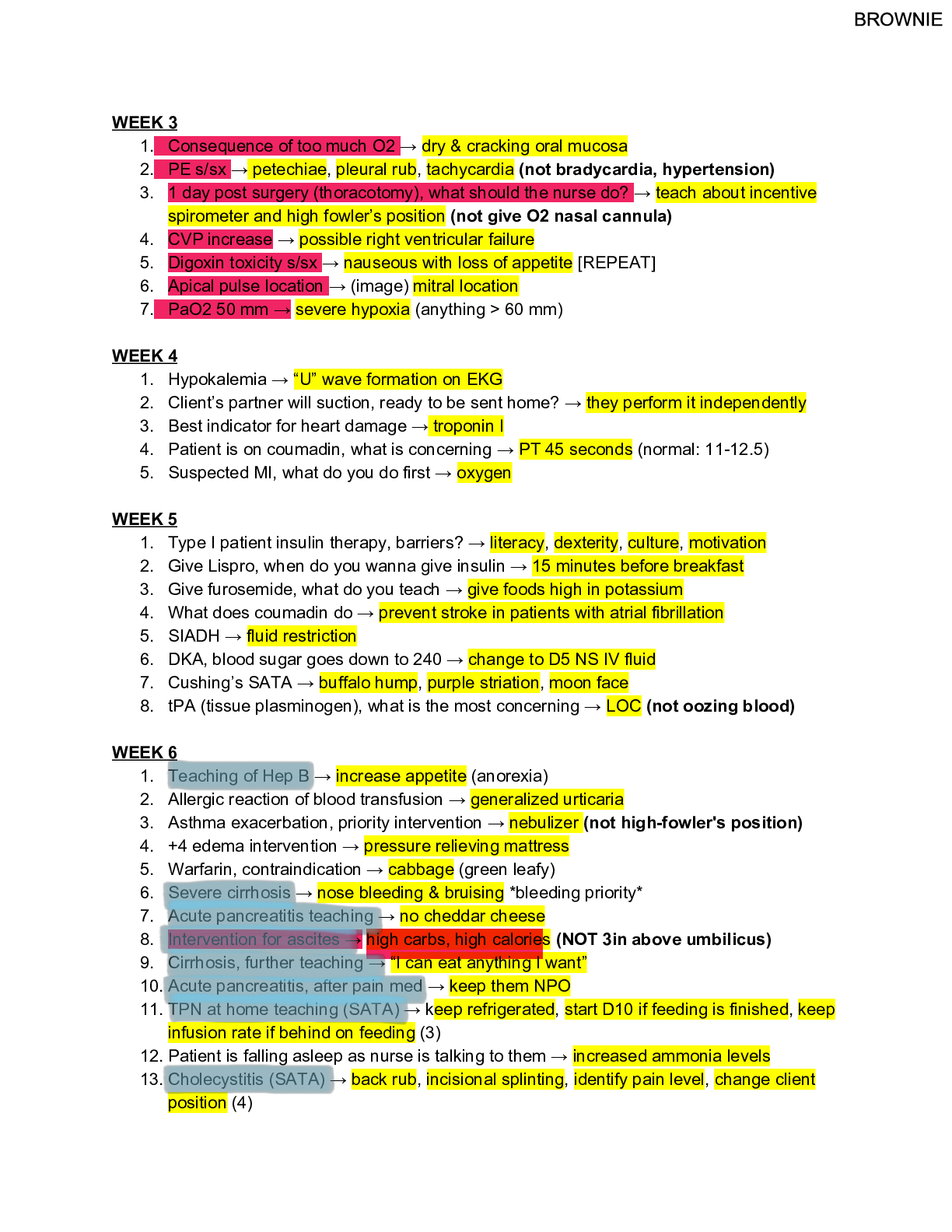


.png)
.png)
.png)

.png)

.png)
